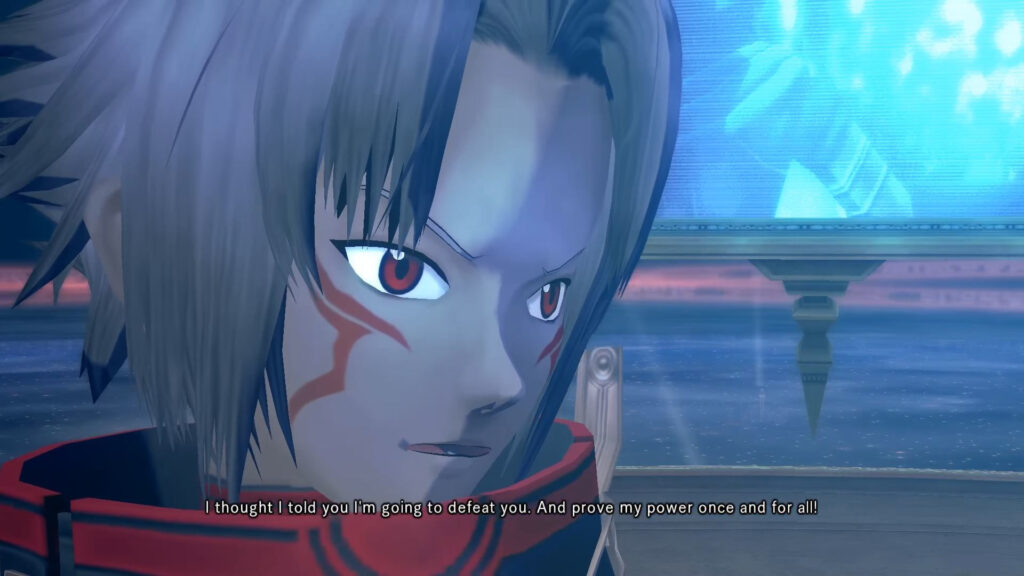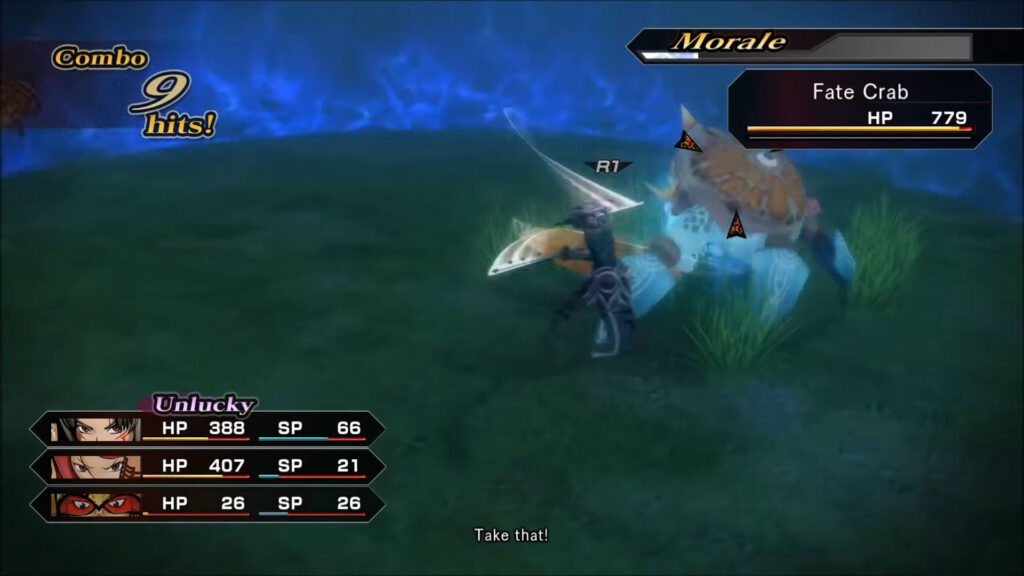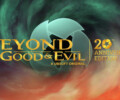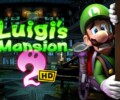
Developer: CyberConnect2
Publisher: BANDAI NAMCO Entertainment
Platform: PC, PS4, Switch
Tested on: Switch
.hack//G.U. Last Recode- Review
Back in the PS2 era, Bandai Namco released a series known as .hack//G.U., the successor to the original .hack series. Taking place in an MMO world, the series spanned three titles that shared story and gameplay, effectively serving as a single larger game. In 2017, the trilogy was remastered for PS4 and PC under the name .hack//G.U. Last Recode, also adding a new epilogue chapter. Now, this remaster has come to the Nintendo Switch, and here is what it has to offer.
Story
.hack//G.U.’s story takes place in an MMO called “The World R:2”, where it follows the adventures of the player Haseo. The game begins with Haseo’s first delve into the game, where he is soon betrayed by two players, who attempt to kill him until he is saved by the gunslinger Ovan. After this, the game skips eight months forward, to a now high level Haseo desperately looking for the player killer known as “Tri-Edge”, who put Haseo’s friend, Shino, in a coma.
Soon following, Haseo receives a message from Ovan, stating he has information about Tri-Edge. Upon meeting up, Ovan reveals the infamous player killer will appear in a certain map, where Haseo will be able to confront and defeat him. However, things don’t go as planned and Tri-Edge easily defeats Haseo, resetting his character and system with an illegal skill.
Confused and looking towards leveling up back to his prime, Haseo immediately logs back into the game and forms a party with two other players. Unluckily for the trio, they are confronted by a group of PKs, only to be saved by yet another mysterious player, Pi. Later on, Haseo is approached by Kuhn, who invites Haseo to the organization where he works alongside Pi, known as G.U., which is tasked with ridding The World of bugs.
In the headquarters for this organization, it is revealed Haseo’s character is special, being an “Epitaph User” capable of summoning a bug destroying “Avatar”. With this new information, Haseo sets out to unlock his powers while aiding G.U. in their mission, still hoping to find a way to wake up Shino from her coma.
Throughout the trilogy, this story continues developing while staying focused on the same goal and featuring the same recurring cast. None of the games’ stories are standalone, requiring the others to be completed, being instead more akin to chapters in a book. This story is one of the most important parts of the game, arguably even more than its gameplay, with characters developing and growing throughout an innovative narrative for its time.
That said, the good segments of the story take a while to get started, more specifically only after three quarters of the first game. Up until that point, players will be stuck with a slow moving plot bogged down by anime tropes and concept introductions. However, once the story gets going it doesn’t stop, running onwards at a good rhythm until the ending.
Graphics
As can be expected from PS2 remasters, the graphics are not stellar for this day and age, although they still hold up decently. The cutscenes featured at certain points particularly shine thanks to their great animation, although they are seldom used for more than a few seconds. Whenever these cutscenes aren’t featured, the game instead utilizes the in-game character models to emote in reaction to the textboxes relaying the conversation, which often becomes uncanny due to the unmoving mouths.
Besides this, the game also runs into some serious issues with asset reuse, often featuring the same dungeons and enemies over and over. Throughout the nearly 70 hours the combined three titles offer, the same bland dungeon designs will have been revisited ad nauseam. Luckily, this doesn’t apply to the characters themselves, which have unique designs and stand out in their own right.
Sound
The games’s sound design is rather good, with a soundtrack featuring a decent amount of songs, competent SFX and complete voice acting. Said voice acting can be rather hit or miss at times, although it is partly due to certain questionable translations. Nonetheless, the voice actors have done their best with the script they were given. Other than this, the sound department doesn’t really include anything else that is noteworthy.
Gameplay
.hack//G.U.’s gameplay follows a standard RPG formula with all its common systems in place. Players will be tasked with exploring dungeons while leveling up their party, collecting new equipment along the way. Combat is a simplistic affair where players will be able to engage monsters with basic attacks and a selection of abilities that may be comboed together. Upon landing enough combos, enemies will enter a “broken” state where players will be able to unleash a more powerful version of their abilities known as “Rengeki”. Doing so will also award extra experience at the end of the combat.
These combat mechanics will not evolve much throughout the trilogy, only providing Haseo with the ability to swap weapons mid-combat. Amongst the aforementioned RPG systems, it is worth mentioning the side-quests and weapon upgrades, which will allow Haseo and company to obtain new equipment and improve their existing weapons. However, the games’ lack of difficulty doesn’t make doing so particularly necessary, as you’ll already have more than enough tools to get through the story encounters without a hitch.
Said party can be comprised of a maximum of three members at a time, with a wide selection of characters to choose from. These allies will be AI controlled, with Haseo being the only character players will directly input commands for. The most interaction with the other party members will be setting their behavior and unleashing “party” abilities by filling the command meter, increasing stats or dishing out a special move.
Alongside the standard combat systems, an alternate bullet hell mode will occasionally appear for Avatar battles. These battles only take place at set intervals of the story, being little more than button mashing segments which players might instantly retry in case of defeat. By shooting at the enemy AIDA or Avatar, players will be able to hit it with several slashes, reducing its health by a large amount. Once the health is completely gone, a “Data Drain” attack will finish off the encounter.
Alternated with the combat segments, players will also have to explore the forums and email in Haseo’s system. These will contain information regarding the quests or even unlock new areas to explore. However, the game has an annoying tendency to force players to log out of The World to check the email only to immediately come back. Although it is a minor nuisance, this process could’ve been streamlined in order to not constantly break the flow of gameplay.
As it can be inferred from the explanation of combat and its lack of evolution, .hack//G.U.’s gameplay is not particularly engaging. This is even acknowledged by the developers, which have included an optional “Cheat Mode” for skipping all but the story, this being the main highlight of the games.
Conclusion
.hack//G.U. Last Recode is an entertaining collection of games featuring around 70 hours of content. However, it is worth noting said content is largely padded out by repetitive combat segments which might not appeal to everyone. The pack’s main appeal is its story and setting, which carry the rest of the experience. Sold at $49.99 and based on the prices for the PlayStation Store and Steam versions, it is worth recommending waiting for a sale before picking up this collection.
Personal Opinion
“Although the combat is rather boring and I could do with a fast-forward button for certain scenes, I have to say I very much liked these games. The immersion in the MMO world is incredibly accomplished and does genuinely provide the feeling of playing such a game. Although I cannot fathom releasing this game at full price when I know for a fact that it goes for under 10 quid, I can definitely recommend it on such a sale. As many players noted on the original release of the games, it would’ve been better if they had just released a single one, but with this compilation that is no longer an issue. Those interested in a good (if tropey) story, will definitely find something to enjoy here.”
.hack//G.U. Last Recode- Review,









No Comments